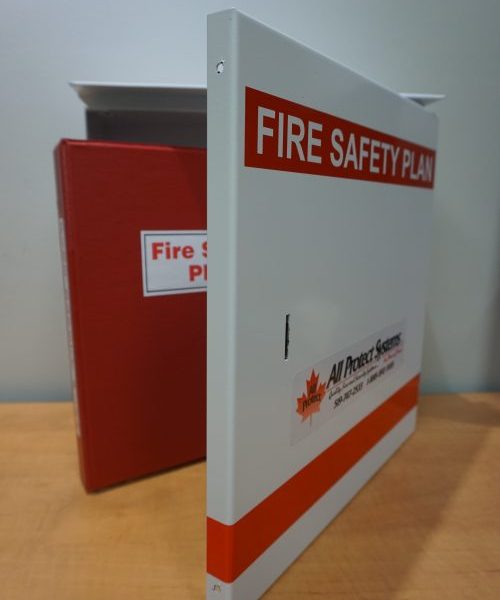
Section 2.8.2 of the Ontario Fire Code requires most buildings to have a fire safety plan. Acceptable fire safety plans must include detailed information for all aspects of fire safety for your building or property. The plan shall furnish the following information:
- Safe and orderly evacuation procedure
- Maintenance and cleanliness routines for fire prevention
- Control mechanisms to minimize fire damage
The Ontario Fire Marshal determines the exact requirements for your building’s fire safety plan depending on the building type and occupancy rate. Though there are templates and standard formats available for outlining a fire safety plan, you still must construct one specifically for your building’s unique characteristics.
While they’re required to get your initial certificate of occupancy, your fire plan must be reviewed and updated at least every 12 months or whenever changes to the building use or structure affect fire safety. Even temporary changes to the building can affect fire safety and require temporary adjustments to your fire safety plan.
Areas for Regular Review
Any updates to your fire safety plan undergo the same considerations that involved its original creation. Your periodic audits should identify any variables that influence fire safety. Pay close attention to the following factors:
- Building layout
- Entries and exits
- Adjacent roads
- Building use
- Item storage and use
- Connections for municipal water and the fire department
- Fire alarm
- Sprinkler system
Periodic consideration of these issues is important, but if any construction or demolition occurs, your fire safety plan must be reviewed and updated to reflect the new building conditions. Carefully consider the ramifications of any building changes during fire safety plan audits.
Fire Safety Plan Objectives
When reviewing your fire safety plan, you should refer back to the plan’s original purpose since it always helps to keep the primary objectives in mind when considering possible alterations. Your building’s plan should consider the following issues:
- Procedures to follow in the event of a fire
- Activating the alarm
- Contacting the fire department, key executives, or designated supervisory staff (emergency phone numbers should be adjacent to all telephones on site)
- Occupant evacuation procedure following the sounding of a fire alarm
- Evacuation of those in need of assistance
- Controlling or extinguishing the fire if possible
- Description and frequency of fire drills
- Instruction, education, training, and organization for supervisory staff entrusted with fire safety
- Instructions for staff for preventing and controlling any potential fire hazards that appear in the building
- Any necessary additional educational or training programs
- Maintenance of all fire safety systems
- Diagrams and manuals for the models and location of all fire emergency systems
- Description of any fire safety alternatives
- Access for the fire department to any part of the building the fire may occur
Reasons for Periodic Fire Safety Plan Review
Fire safety plan review can seem like another burdensome bureaucratic nuisance, but it’s vitally important to protect both lives and property. Dangerous fires can occur in even the best-protected buildings. While you can’t eliminate the possibility of a fire, a proper fire safety plan gives your building and its occupants the best possible chance to minimize its destructive effects.
Many business owners and managers have a lot of responsibilities that prevent them from taking the time to design and review their fire safety plans. If you’re one of them, you might find it worthwhile to delegate that important responsibility to a trained professional.
The fire safety experts at All Protect Systems have been helping Ontario businesses with their fire protection needs since 1996. Besides fire safety plans, they also service fire alarms, fire extinguishers and hoses, gas detection systems, emergency and exit lighting, and annual and monthly inspections. Call them today to learn what they can do for you!